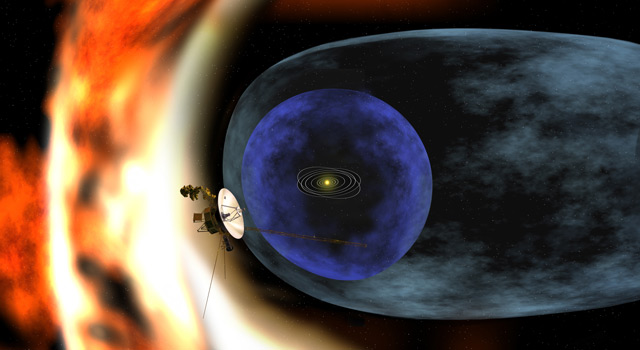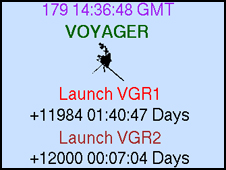News | June 28, 2010
Voyager 2 at 12,000 Days: The Super-Marathon Continues

NASA's plucky Voyager 2 spacecraft has hit a long-haul operations milestone today (June 28) -- operating continuously for 12,000 days. For nearly 33 years, the venerable spacecraft has been returning data about the giant outer planets, and the characteristics and interaction of solar wind between and beyond the planets. Among its many findings, Voyager 2 discovered Neptune's Great Dark Spot and its 450-meter-per-second (1,000-mph) winds.

The two Voyager spacecraft have been the longest continuously operating spacecraft in deep space. Voyager 2 launched on August 20, 1977, when Jimmy Carter was president. Voyager 1 launched about two weeks later on Sept. 5. The two spacecraft are the most distant human-made objects, out at the edge of the heliosphere -- the bubble the sun creates around the solar system. Mission managers expect Voyager 1 to leave our solar system and enter interstellar space in the next five years or so, with Voyager 2 on track to enter interstellar space shortly after that.
Having traveled more than 21 billion kilometers (13 billion miles) on its winding path through the planets toward interstellar space, the spacecraft is now nearly 14 billion kilometers (9 billion miles) from the sun. A signal from the ground, traveling at the speed of light, takes about 12.8 hours one-way to reach Voyager 2.
Voyager 1 will reach this 12,000-day milestone on July 13, 2010 after traveling more than 22 billion kilometers (14 billion miles). Voyager 1 is currently more than 17 billion kilometers (11 billion miles) from the sun.
The Voyagers were built by JPL, which continues to operate both spacecraft. Caltech manages JPL for NASA.
Written by: Jia-Rui C. Cook
NEWS RELEASE: 2010-214
